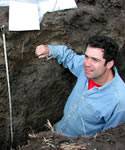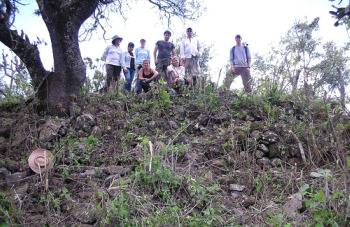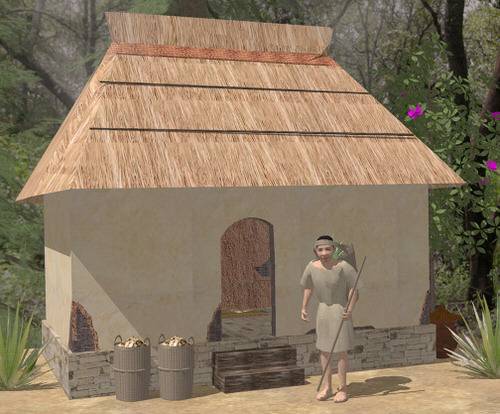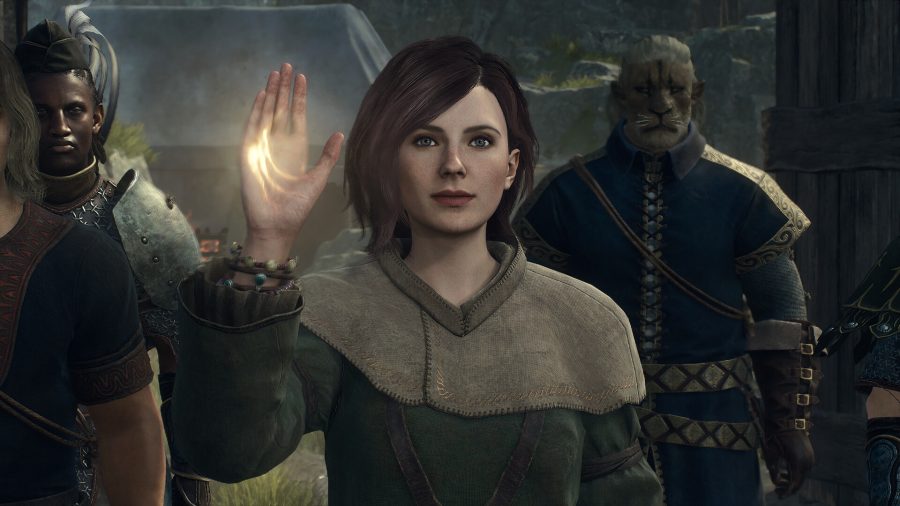Technology has been a part of archaeology from the time it shifted from treasure hunting to academic profession, from using geography to plot a grid on a dig site, mechanics to pump out a flooded tomb, statistics to map demographic changes or now, using personal technology and global positioning software to identify the previously unknown.

The latter is what Professor Chris Fisher, associate professor in CSU’s Department of Anthropology, and his team from Colorado State University have done. They discovered a large, ancient urban center using rugged handheld computers and GPS.
This thousand-year-old urban center stands, overgrown with scrub and soil, in the Lake Pátzcuaro Basin in the central Mexican state of Michoacán. Fisher’s team used four Trimble Recon rugged handheld computers in conjunction with GeoXH and GeoXT GPS receivers, to do real-time, on-site mapping of over 1,300 architectural features, including hundreds of “house mounds,” in just one square kilometer of the site. They took 25 to 30 data points on each feature but were still able to complete the initial full-coverage mapping in a month.
“The technology accelerated our ability to get meaningful data,” he said. “We were able to create an architectural typology of the site right away!”
The city was part of the Purépecha Empire, also known as the Tarascan Empire. The Purépecha controlled a great chunk of western Mexico with a fortified frontier. On the other side of that frontier? The much better known Aztec Empire.
The technology, and the strategy Fisher developed for its use, allowed the near-immediate capture of a frieze-like picture of the urbanization of a Purépecha center that enabled empire. The city, which prior to Fisher’s work, was nothing but a couple of ruins and a pin in a map, turned out to be five square kilometers. Without the hand-held, on-site tech, it would have possibly taken seasons of painstaking mapping to develop the picture.
“The Lake Pátzcuaro Basin was the geopolitical core of the empire with a dense population, centralized settlement systems, engineered environment and a socially stratified society,” said Fisher.
Although the city was initially discovered during the 2009 season, Fisher is currently presenting his findings officially at the Society for American Archaeology meetings in St. Louis. His team will continue mapping the city this summer.
Fisher specializes in climate change archaeology, plotting changes in climate and the cultural adaptation that went with it, including identifying which strategies worked and which failed. A project studying this, Legacies of Resilience, is partially funded by the National Science Foundation.
“One of the great challenges for the 21st century will be creating solutions to link social and environmental change,” said Fisher. “Archaeology is uniquely poised to make a significant contribution to this debate by helping to explain trajectories of socio-ecosystem evolution over long time periods.”

When Fisher heads back the site on April 18, he intends to make greater use of Google SketchUp, a 3D modeling program. He already used it to make in-field sketches but this season he and his team will use it extensively to create a portfolio of walkable sketches and a three-dimensional picture of the urban center and its agriculture.
The same technology we use in our daily lives is helping to make that contribution possible. I’m sorry. But exactly how cool is that?
Reconstruction of a commoner’s house by Chris Fisher

Fessin’ up time. I hooked Chris up with his computer system during the time I worked for its manufacturer. I did so because the project, climate change archaeology, was so cool I almost fainted when he told me about it.









